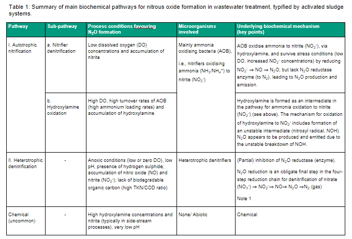Icon Water commits to net zero by 2045

Icon Water is on its way to net zero by 2045 with the recent release of its eMission Possible Plan, outlining the utility’s emissions reduction initiatives currently in place and its pathway to net zero as part of its commitment to the UN Race to Net Zero campaign.
The plan showcases Icon Water’s key emissions targets, which primarily focus on addressing fugitive emissions from wastewater treatment and switching to a zero emissions fleet, as the ACT has already achieved the transition to 100% renewable electricity.
Icon Water Manager Environment and Sustainability Benjamin Bryant said the utility was well placed to develop the plan, thanks to the amount of work it had already completed in producing and implementing its resource recovery and climate change adaptation plans.
“As a water utility, much of what we do relies on our environment being clean and healthy. As such, we have always been invested in developing ways to reduce our environmental footprint,” Bryant said.
“We started as a business with our resource recovery planning and our climate change adaptation planning. We have had some really great wins already with these pieces of work.
“We consider our circular economy approach really successful. We have achieved a recovery rate of 75-80% of operational waste materials. That’s a great success story, but it was also a great dress rehearsal for what we had to do with our climate change approach in terms of mitigation.”
With Icon Water now publicly declaring its commitment to net zero by 2045, it will be reporting on its performance under the plan consistent with UN’s Race to Zero requirements.
“The title of our plan – eMission Possible – reflects that we absolutely believe this mission of achieving net zero is within our grasp,” Bryant said.
Planning the possibilities
Icon Water has already halved its greenhouse gas emissions since 1990 levels, mainly through hydro and solar installations, energy efficiency initiatives and the ACT achieving 100% renewable electricity.
“The ACT Government has already done an amazing amount of heavy lifting for us, with ACT’s electricity being 100% renewable,” Bryant said.
“This means that 75% of our emissions now comes from fugitive emissions produced during wastewater treatment processes, being nitrous oxide and methane.”
Most of the utility’s remaining emissions come from its fleet, and the electricity used at their NSW facilities. In 2021 Icon Water generated 17,530 tonnes of carbon dioxide equivalent, which represents a little over 1% of the ACT’s total emissions.
“After establishing our carbon footprint, we looked at all the potential solutions. We ran several workshops within the business, and came up with around 400 ideas, which were then distilled into 20 options,” Bryant said.
“We also got Aurecon in to look at both the cost and technical feasibility of those 20 shortlisted options. We have different carbon sources, so it’s not as easy as asking which solution is the most cost-effective.
“We also have a carbon hierarchy, and avoidance is our top priority, it’s the most desirable, with offsets and insets at the bottom, to be used only as needed. But it takes all options on the table to create a pathway to net zero by 2045.”
Bryant said consulting the community through its Let’s Talk Water and Wastewater engagement program was also an important part of developing the plan, and they found residents of the nation’s capital support accelerating emissions reductions initiatives while finding ways to limit the impact on prices.
“Canberra has a very active and politically engaged community. We asked our customers if they would support us accelerating towards net zero and achieving a greater environmental sustainability goal, and we had a very strong agreement,” he said.
“Canberrans understand that we need to be careful to make sure we strike the right balance between acceleration and costs moving forward. But we also found that Canberrans have a certain sense of pride in the ACT being an innovator.
“Our customers want us to move from supporting innovation to driving it. And that’s what we intend to do.”
Driving innovation
Given Icon Water’s primary emissions profile is fugitive emissions, it will be dedicating a lot of energy and investment to tackling the challenge of finding solutions for fugitive emissions, and Bryant said the utility has already begun the process.
“While we know that fugitive emissions make around 75% of our carbon footprint, internationally we don’t yet have technology that’s feasible and available to address that right now. And we need to do more research,” he said.
“We have a research project underway through WaterRA, with the University of Queensland and many other peer utilities, including many leaders in this space.”
Bryant said Icon Water is currently underway with the longest wastewater treatment fugitive emissions monitoring study in Australia, which will help bolster research into fugitive emissions moving forward.
“The 12 months of continual monitoring started in December 2021, and looks at how fugitive emissions are produced throughout different seasons, which is currently unknown in Australia, and across various operational regimes,” he said.
“We will be looking to develop better operational control as one of our main options moving forward, aiming to have better control over the biological process to reduce harmful emissions.”
The University of Queensland is also putting together a raft of fugitive emissions mitigation options for Icon Water, Bryant said.
“It’s important for us to have our own mitigation options as each treatment plant is different. We have estimated that these mitigation efforts could help us reduce emissions by a further 10%, but it could be more, and we are currently undertaking some major upgrades at our Lower Molongo Water Quality Control Centre, too,” he said.
“We have uncertainty about exactly how much we will reduce our fugitive emissions because we’re not there yet with research and technology. We are hoping to actively reduce our fugitive emissions and over time expect to reduce our offsetting plans and revise our pathways as we have access to emerging technologies.”
Pushing boundaries
Bryant said Icon Water is in a unique position to innovate, as a lot of other utilities do not have the luxury of starting their net-zero journey without having to first tackle 100% renewable electricity.
“Icon Water has a bit of a head start, and we intend to use it wisely and keep that momentum going,” he said.
“We are looking to grow our involvement in the fugitive emissions research we are doing. It’s the biggest challenge we have now in terms of meeting our goal.
“We will be focusing our effort and our investment in finding solutions, and we are dedicated to working alongside the broader sector to make it happen.”
Bryant said collaborating to find solutions to the net zero challenge is essential if the sector is to share the performance, cost and risk, and achieve more, sooner.
“We know fugitive emissions are going to be a worldwide challenge. It’s all hands on deck from here on in,” he said.
“Through our circumstances, we happen to be on the leading edge in this instance. And we’d love everyone to join us.”

